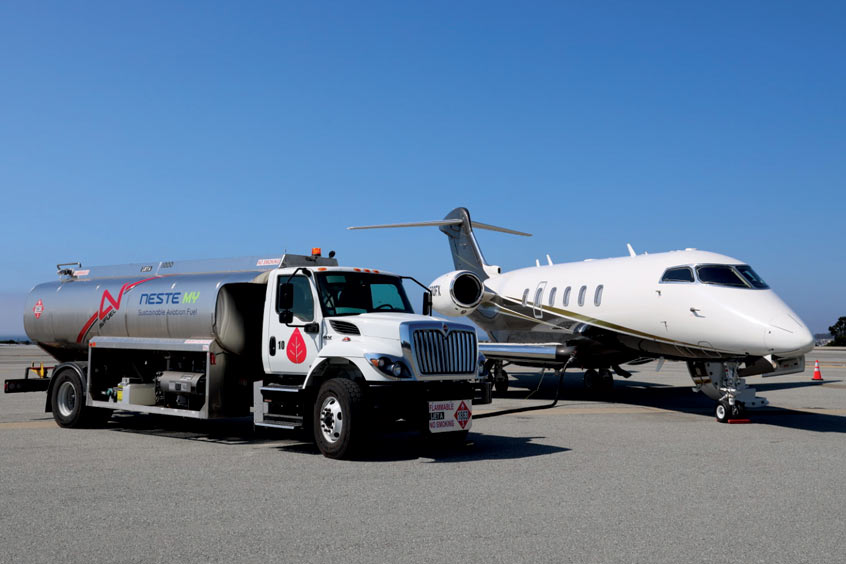ACE 2026 - The home of global charter.
• 4Air
• Clay Lacy Aviation
FBO/Handler (Van Nuys)
• Clay Lacy Aviation
FBO/Handler (John Wayne Orange County / Santa Ana)
BAN's World Gazetteer
• Ohio The bimonthly news publication for aviation professionals.
The bimonthly news publication for aviation professionals.

4Air has launched an interactive map showing private jet owners and operators where to find sustainable aviation fuel (SAF). Limited distribution of SAF makes it hard to find, leading to a fragmented market, and 4Air aims to solve this problem using its map. Regardless of the airport, fixed-base operator (FBO) or fuel provider it will show you the closest aggregator of SAF.
“Sustainable aviation fuel is an efficient and effective way to reduce the impact private jets have on climate change,” says Kennedy Ricci, 4Air's president. “By making it easier to find SAF, we hope to promote its use and expand its availability.”
The map shows 20 verified SAF locations with supply points suitable for business aviation. 4Air excludes any locations if they have uplifted SAF only once, only maintain supply for particular clients or do not have a suitable quantity for business aviation sales. Each listing includes an address, a link to the FBO's website and a contact number to reach the provider. The map will be updated as new locations are verified.
Sustainable aviation fuel is similar to standard jet fuel in the sense that it has a similar chemical composition to the fossil fuel, leading to the same tailpipe emissions and it can also be pumped, stored and used within the existing infrastructures. The hydrocarbons come from sustainable sources such as used or waste cooking oils, tallow, waste biomass and municipal solid waste. This results in a net reduction of emissions when compared to standard jet fuel during its lifecycle. Some emissions of sulphur oxides, particulate matter and nitrous oxides may be reduced depending on the feedstock for SAF.
Clay Lacy Aviation has previously agreed, in February 2021, to supply SAF at its two FBOs at Van Nuys airport and John Wayne Orange County airport in California. World Fuel Services has begun monthly SAF deliveries to both locations, with a minimum of 100,000 gallons to be delivered in 2021.
“The future of sustainability within private aviation depends on the increasing demand and availability of SAF,” says Scott Cutshall, SVP of development and sustainability at Clay Lacy. “We're excited for 4Air's interactive map to make it easier for operators to locate SAF as it rolls out at more and more of their destination FBOs, including Clay Lacy locations.”